What is Your Story?
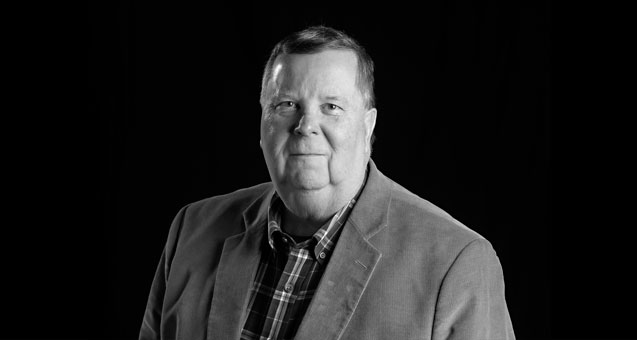 By David Wahlberg ’81 (mass communications) Executive Director of Marketing and Communications, MSUM
By David Wahlberg ’81 (mass communications) Executive Director of Marketing and Communications, MSUM
As a former advertising copywriter, I’d say ad writers have it easy. They can get people to read their work with attention grabbers like “big sale” or “new and improved.” Add photos of babies or puppies and they’ve got a sure bet.
University magazine writers, on the other hand, must work to present topics in compelling ways. Why compelling? Because research connects the time spent reading a magazine to other forms of alumni engagement. So, at its most basic level, the purpose of a university magazine is to be read.
Those of us who have a hand in Moorhead Magazine think a lot about which topics people might be interested in reading. For example, research shows you don’t mess with class notes. People really like their class notes.
Readers tell us they want to know what’s going on at MSUM. Here’s something of significance; for the past couple of years, MSUM has engaged in some deep, strategic conversations. MSUM has declared that our purpose, in the simplest and most idealistic form, is to transform the world by transforming lives. We defined our core values as grit, humility and heart. You can more read about these declarations and our strategic anchors at mnstate.edu/about/mission.aspx.
Lately, I’ve given a lot of thought to one of these concepts, “creating a campus community that is diverse, inclusive, globally aware and just.” As a white guy in a region that’s 90 percent white, I don’t spend much time thinking about being white. People don’t give me a second look when I enter a store or grab their purse tighter when I pass by. If diversity, in this case my whiteness, is less relevant in my daily life, am I less inclined to read about it? Will the other 90 percent of this community be less willing to read about it?
To understand MSUM’s historic and renewed commitment to diversity, we wanted to share several essays around a theme of diversity, each written by an alum with a different experience at MSUM. You see, there isn’t one narrative that tells the story of diversity at MSUM. There are thousands. Understanding these experiences teaches me, and hopefully you, something new.
Newsflash: I'm gay
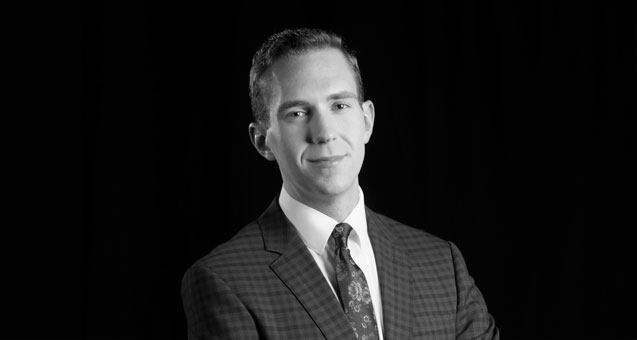 By Jordan Schroeer ’15 (political science, broadcast journalism) Multimedia Journalist/Weekend Anchor, WDAY-TV
By Jordan Schroeer ’15 (political science, broadcast journalism) Multimedia Journalist/Weekend Anchor, WDAY-TV
I agonized over this moment for hours. I told myself I was going to tell my friends who I really was before, but never could. Thinking I could lose the friends I just made at college, the carefully rehearsed lines no longer seemed right. What did seem right was sitting in the lounge of Grantham Hall, enjoying time with my friends, on the verge of knowing an important part of my life.
We just finished looking at houses to live in next year off campus, and everyone was chatting about what house we liked and didn’t like. Finally, after screaming at myself internally to say something, I did. “Before we live together, I think it’s important you all know something,” I say. ‘Oh shit,’ I think. Now they’re all looking at me and I have to say it. “Ummm, I’m not sure how to say this…” I say with my voice trailing off as I look from their faces to the ground.
“Do you need a calculator?” My friend completely unaware of where this conversation is going says.
“No.” I say, regretting my final moment to back out. “I’m gay.”
Their serious faces turn to smiles. “That’s what you wanted us to know before we live together?” a friend asks leaning forward.
“Um, yeah,” I awkwardly reply.
In unison, as if rehearsed, they all say, “We don’t care! You’re our friend no matter what.”
After years of wondering what that moment would be like, I finally knew. I wasn’t cast out. I wasn’t ‘un-friended.’ I was validated. I was loved.
The people I met at MSUM were the first people I ever told I was gay. It was the right place to do it. I could be myself. I knew the other students, staff and faculty would support me so long as I wanted to continue my education and make any contribution to our community and country in my own way.
I grew up in a small town where ending your life seemed like a better option than coming out. Back home I’d been called a faggot, homo, queer in front of entire classrooms, in personal conversations and in online chats. No one said anything in my defense. The teacher would turn away, my ‘friends’ would walk away. I knew that wouldn’t happen at MSUM. I knew the university and everyone who calls it home would judge me for my character, not my affinity for a rainbow flag.
Shortly after I came out, I saw the renovated sitting area in the center of campus was completed. Engraved on the benches read the words, “And the day came when the risk to remain tight in a bud was more painful than the risk it took to blossom.” I smiled as I walked by. My university helped me blossom. My university helped me gain confidence. My university allowed me to simply, be myself.
Anishinaabekaa (there are a lot of people)
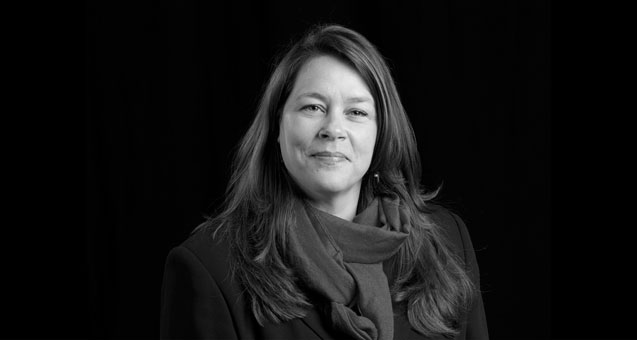 By Karen Branden ’91 (sociology) Professor of Sociology, Director of the Interdisciplinary Center for Diversity and Social Justice, MSUM
By Karen Branden ’91 (sociology) Professor of Sociology, Director of the Interdisciplinary Center for Diversity and Social Justice, MSUM
When people ask me how to define diversity, I respond by saying we, at the Center, don’t define diversity. We want people to share their stories. If we define diversity we might close the door to someone with a diverse experience or perspective that enhances our world.
Diversity between and within groups is a strength in our society. Most scientific research on diversity indicates it makes us more creative, offers more solutions to problems, and develops new ways of thinking and interacting in a complex world. Unfortunately, diversity can be painful.
The first time I felt diversity between groups was when I was 11 years old. I was standing on the baseball field waiting to try out for the team. The coach said I couldn’t play because I was a girl. I was confused because I had played baseball my whole life, including the year before playing in a smaller town not too far away. I didn’t realize the only reason girls played there was because there weren’t enough boys! The coach in my new town didn’t give me a chance even though the boys told him I was a good player. My heart was broken that day and I still miss baseball.
Whether you are a boy or a girl is often obvious, but some diversity is hidden. I am Ojibwe, Irish, French, German, Norwegian and Swedish. I pass as white even though my lineage is not completely white. My entire adult life I have gravitated more and more to my Ojibwe lineage; it’s something strong and pure in my heart. People look at me and see a white woman, but when they get to know me they see someone else.
This part of my identity led to losing a friend recently and clarified the reality that sometimes diversity happens within groups and it can be just as painful. My Ojibwe friend is a beautiful native woman with skin darker than mine. Unlike me, she wears her nativeness daily and sometimes people treat her poorly because of it. I understand her wanting to police identity so nativeness can be protected from white people who claim to be native but do not live native. White people sometimes claim a native identity but do not really know for sure. My friend did not accept the diversity of my story and has “unfriended” me. I am deeply saddened about this loss. How do I handle not being Ojibwe enough for some people and too much Ojibwe for others?
I am learning more about being Ojibwe from elders. I share my experience so that someone else who passes as white might relate and not feel so alone. My story has its own lessons. Sharing our individual stories leads to something bigger; the reality that diversity is the real weaving of our society even within groups.
Diversity is simply understanding “ranges” and “different experiences.” These definitions acknowledge the institutional features that make some diversity a complication in people’s lives as they strive for education, opportunity, income, wealth or even a voice. We know this is based on color, gender, sexual orientation, ethnicity, religion, ability, and many other features that make us unique. We must understand these social patterns that make life difficult for a broad range of marginalized people.
We also need to share our stories so we can always be watchful for new ways our society negatively impacts groups of people. Diversity changes over time as more people share their experiences. This is why it’s important to know the institutional definitions but not let them overshadow the individual experiences. Together, institutional realities and individual experiences tell the whole story of diversity. What does your story mean to your community? It might be more powerful than you think. I know sharing mine lost me a friend, but I didn’t lose myself.
My black skin
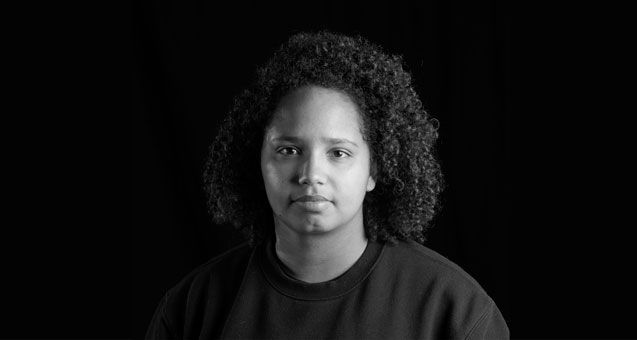 By Lexi Byler ’17 (public relations, advertising, management) Marketing & Communications Intern, MSUM Diversity Chair, Student Senate
By Lexi Byler ’17 (public relations, advertising, management) Marketing & Communications Intern, MSUM Diversity Chair, Student Senate
I used to wish I were white. Abandoned by my black father, I grew up entirely with the white side of my family. Having me at 19, I was raised by a strong single mother alongside my supportive grandparents. I grew up in predominately white neighborhoods in the suburbs of Minnesota prior to moving to Wisconsin.
When I was young, I never understood my blackness. Like most children, my opinions on people were formed by the presents they gave me on my birthday or how easily I could beat them in a game of Candy Land, not by the color of their skin. The innocence of a child can be a beautiful thing. However, there comes a point where the ignorance that used to be bliss ends up inhibiting.
I was in elementary school the first time I experienced overt racism. I was swimming at a hotel while on a family vacation with my white siblings. There were two other children in the pool, both white, who began playing with my siblings. I was a reserved child, always quiet and insecure around peers I didn’t know. Observing how much fun they were having, I asked to join. The two children told me I couldn’t play with them because I was black. My heart still sinks at the memory knowing how much courage it took just to ask.
Being in a predominately white public school system had its challenges. I was the butt of a lot of black jokes and diversity wasn’t valued the way it should be, socially or educationally.
MSUM gave me the freedom to learn about my own diversity. From the outside looking in, people may underestimate the diversity on this campus. The Office of Diversity and Inclusion and its centers have given me an abundance of knowledge about diversity issues and topics. Many staff, faculty, administrators and students are knowledgeable and passionate about diversity. Through the relationships and mentorships I’ve formed, and the learning opportunities the university has provided, I learned to be comfortable in my skin; my black skin. For that, I’ll be eternally grateful.
It's different here
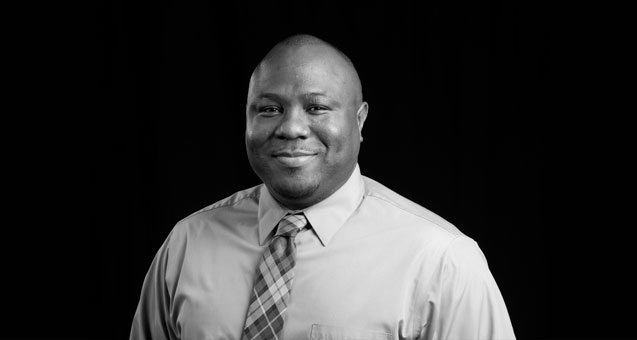 By Vincent Williams ’03 (social studies, secondary education) and ’11 (M.A. curriculum & instruction) Assistant Principal, Woodrow Wilson High School
By Vincent Williams ’03 (social studies, secondary education) and ’11 (M.A. curriculum & instruction) Assistant Principal, Woodrow Wilson High School
Growing up in the inner cities of Chicago and Detroit, my exposure to other racial and cultural groups was limited. The geographical layouts of those cities contributed to my lack of interactions with others because certain ethnic and cultural groups resided only in specific parts of the city. The people I interacted with on a daily basis looked like me, talked like me, thought like me. Therefore, my worldview was “black.” I looked at everything that happened in the world through the lens of an African-American.
The opportunity to attend MSUM widened my worldview. As a member of the football team, I formed lifelong friendships with guys who came from places such as Fosston and Dilworth, Minn., Hope-Page, N.D., Miami, Fla., and Riverside, Calif. These friendships helped me to understand cultures and perspectives different from my own.
I vividly remember going to Washburn, N.D., for Thanksgiving with one of my teammates and thinking to myself, “What am I getting into?” I had never been to small-town USA before and didn’t know what to expect. My experience in Washburn was awesome! The people were loving, caring and, of course, “North Dakota nice.” I felt as though I had known these people forever.
I often laugh thinking about my first experience in an MSUM classroom. The biology course was held in King Hall. After settling in my seat, I looked around the room at the 200 or so other students, none of whom looked anything like me, and thought to myself, “What have I gotten myself into.” Talk about culture shock! I often joked that I would never be able to skip a class because it would be obvious to the professors when I wasn’t there. The faculty made it a point to connect with all of their students and often assigned group projects to help students meet and collaborate with one another. This helped the culture shock I was experiencing dissipate rather quickly.
Whenever I visit MSUM’s campus, I am amazed at the level of diversity that exists amongst the staff and student population. There are people from all walks of life, backgrounds, cultures, religions, etc. MSUM’s rich tapestry of diversity provides stakeholders with the opportunity to widen their worldview by learning alongside people who may not look like you, talk like you, or think like you. I believe this to be true for me, personally.
Finding my voice
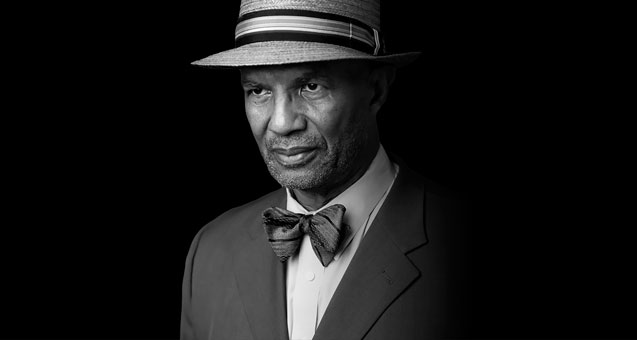 By Jerome P. Barney ’72 (Spanish education) Principal Attorney, Barney Law Group, P.L.C.
By Jerome P. Barney ’72 (Spanish education) Principal Attorney, Barney Law Group, P.L.C.
My grandfather was white. My mother is mulatta. I moved from the segregated South to the integrated Hyde Park neighborhood in Chicago. I learned to embrace other cultures, but I am proud of being black.
I played basketball at Saint John’s University, earning Honorable Mention All-Conference on the Johnnie 196869 National Championship team. Academically, I was a bit of a screw up. I got a second chance—at basketball and school—when Dragon Coach Marv Skaar recruited me to play for the Dragons. Johnnie Coach Jim Smith vouched for me, according to Marv.
I became a real student at MSUM. I wanted to prove to my coach, the president and the guy in the mirror, that I could do better. I was motivated to distinguish myself athletically and academically.
Playing on the 1970-71 basketball team is one of the greatest sports stories in the history of Dragon athletics. Led by Mike Berg, Charlie Williams, Steve Colby, Dan Retherford and myself, we had a 24-2 season, won the NIC and lost by one point to Augsburg to advance to the national championship. My Dragon basketball experience launched a sequence of events that catapulted me to many bigger opportunities.
MSUM gave me a second chance to prove myself worthy of recognition and success. I’m honored to be a member of the Dragons Sports Hall of Fame with my teammates. My MSUM experience changed my world.
Spring 1970 was a transformative time. I became a vocal champion for civil rights after the May 15, 1970 killing of two black students on the Jackson (Miss.) State University campus. It was very emotional for me because I had many relatives who attended Jackson State. There was little reaction on our campus, or in the country, to these killings, yet there had been national outcry of the May 4, 1970 shootings of white students by the Ohio National Guard at Kent (Ohio) State University.
When I spoke, students listened. I was a 6’ 6” black dude with an Afro and had become a bit of a public figure on campus. I encouraged the discussion about racial disparity and felt like our voices were heard. MSUM students became sensitive to the movement. I’m proud of how I helped bring these topics forward for public discussion on our campus.
We hear a lot about race in America, but in reality, there is only one race—the human race.
Project E-Quality
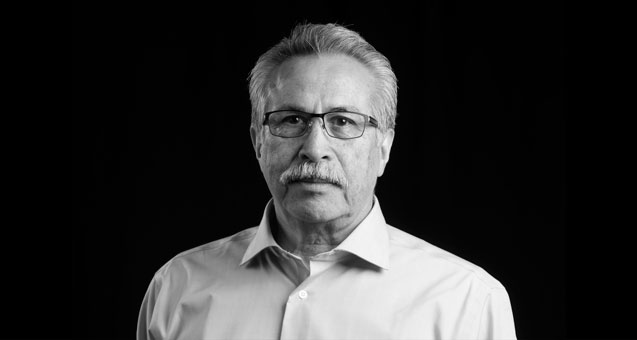 By Abner Arauza ’89 (individualized studies, business administration, management) Retired Associate Director, Multicultural Affairs, MSUM Adjunct Professor, MSUM Consultant, Cultural Programming Services and Grant Writing
By Abner Arauza ’89 (individualized studies, business administration, management) Retired Associate Director, Multicultural Affairs, MSUM Adjunct Professor, MSUM Consultant, Cultural Programming Services and Grant Writing
My family had been migrating between Crystal City, Texas, and Casselton, N.D., to work in the sugar beet fields since 1940. For three decades my family worked summers for the Sinner Brothers and Bresnahan Farms.
I attended Southwest Texas Junior College for three semesters after high school. The summer of 1968, George Sinner, who later became governor of North Dakota, asked me what I was going to do after I finished at SWTJC. I wanted to continue my education but I didn’t know if I could afford it. Sinner helped connect me to Moorhead State College (MSC) and a new a program called Project E-Quality.
My family had concerns about me attending college in Minnesota. Like most Mexican American families, we were very close and depended on and supported each other strongly. Finances and leaving my family in Crystal City were obstacles, but George Sinner’s suggestion offered an option because there would be other Mexican American students at MSC. I also had the Sinner family support and families we knew through the church we attended in Fargo during the summers.
After arriving on campus, I was introduced to staff at the Project E-Quality office. As it turned out, many of the Mexican American students in the program were from my home area: Crystal City, Asherton, Carrizo Springs and Uvalde. One student was from Lubbock and another was from Fargo-Moorhead. We all became fast friends. My family placed great importance on being selfsufficient but mostly within the safety net of the family. This would be my first time away from my family, totally alone and on my own.
As things turned out, my family should not have worried. The director of Project E-Quality Lois Selberg was more than a program administrator. She was an advisor and support services coordinator. She was the mom away from home for many of us. She created opportunities for students—helping them find jobs, admonishing them for not keeping up with their studies, finding tutors, and most significantly, connecting students to faculty, staff and families in the community who welcomed them into their homes and lives.
The late 1960s were marked by events of the Civil Rights Movement. Although most Americans are aware of social unrest related to African Americans, some might not know that the ’60s also witnessed a civil rights struggle by Mexican Americans. So, for Mexican American students coming to MSC, including me, this was not just a migration of bodies, but a migration of ideas and beliefs that fostered activism. MSC was a place where students and their philosophies found fertile ground to grow. Mexican American students who arrived at MSC in the late 1960s graduated and went on to become college administrators, school teachers, business owners, federal program administrators, and state program employees.
After graduation, I returned to Crystal City, where I lived until I came back to Moorhead in 1988 as a newlywed. In time, I became head of the Multicultural Support Services Office at MSUM. I had the privilege and extraordinary opportunity to play a role in helping students of color find their strengths, develop their skills, and enhance their knowledge. They did this on their own, really; I just gave them a “guided tour” by pointing out where the opportunities were.
I retired from MSUM a few years ago, but you can still find me on campus having lunch with my wife, visiting friends and teaching a class as an adjunct.
MSU Moorhead might not have all the answers, nor is it the be-all and end-all institution of higher learning. However, MSUM continues to open doors and provide outstanding support to help students grow. MSUM fosters a spirit of learning and contributing to a better diverse world. It’s a place I look forward to my grandchildren attending.
This story was first published in Moorhead Magazine, Spring 2017.
Make Sure Your Story Is Heard
Let us know how your life has been changed by being a Dragon: tell us your MSU Moorhead story today!
Send Us Your Story